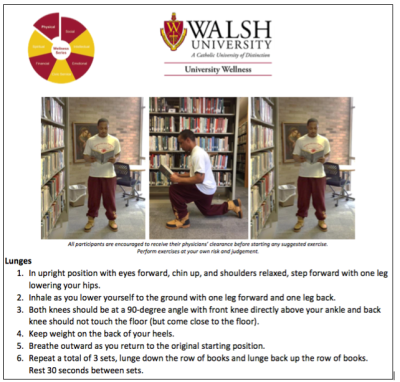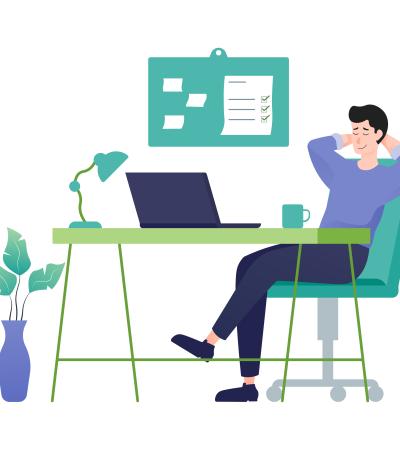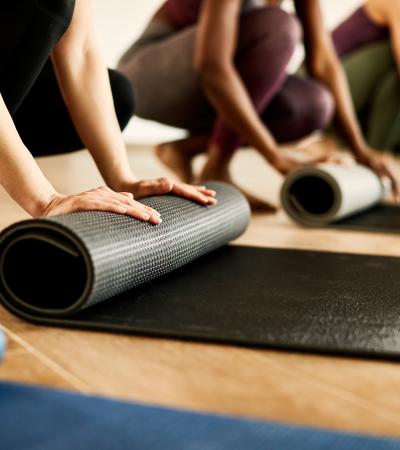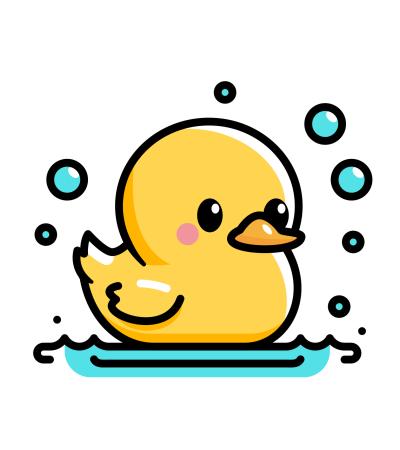Beginning in the early 1970s, colleges and universities across the U.S. (and beyond!) started developing campus wellness offices and initiatives. Today, these units have become nearly ubiquitous.
As these offices developed, more and more academic librarians have developed and sustained programming partnerships with them. This month, I spoke with the director of a campus wellness office who has worked with her academic library for nearly a decade about how libraries can start working with campus wellness to develop programs.

Campus wellbeing on the rise
First, let’s start by taking a look at some of the indicators of the development of this trend:
- An August 2019 library conference featured a session on “Wellbeing at the Library: Collection Development and Programming” highlighting how “working in collaboration with the university wellbeing director, academic librarians have created a culture that promotes wellbeing at the Texas Woman’s University Libraries” through “the creation of a Wellbeing Collection, yoga sessions during midterms and finals, and eye strain prevention practices for cataloging staff.”
- An October 2019 online conference features a session on “University Library/Wellness Center Collaborations” in which Cheri Smith, psychology librarian at the University of Notre Dame, discusses “the partnership that the Hesburgh Libraries has developed with the university’s Center for Student Well-Being.” This partnership includes “hosting Counseling Center ‘Let’s Talk’ sessions in the libraries, establishing a regular schedule for ‘Health Hut’ visits, and providing space for relaxation and naps during stressful times of year.” This partnership has become so deep that the Center for Student Well-Being invited the library “to participate in a Healthy Campus Coalition grant funded by the American College Health Association.”
Mental, emotional and physical support
If you want to start developing these relationships at your library, it can help by understanding a bit more about campus wellness offices. To that end, I talked with Megan K. Allen, director of university wellness at Walsh University in North Canton, Ohio, about the work she has done with her library since 2011.
When Allen first joined Walsh, she initially thought of the library only in terms of the intellectual dimensions of wellness. But as she learned more, and as her relationship with librarians deepened, she realized libraries' connection to wellness goes further than that.
“When students are cramming for tests, then the library is also the environment for supporting mental and emotional pieces [of wellness]," Allen said. "It trickles into the physical, too, because they will drink too much coffee and energy drinks to try to push through, and then that opens the door to them asking themselves ‘Why am I sweating? Why am I breathing heavy?’”
To address these mental, emotional and physical dimensions of wellness in the library, Allen and the library collaborate during finals to support student success in what may seem unorthodox ways. The wellness office contributes snacks that are high-carb and high-sugar because “it’s back to that research that shows that carbs feed your central nervous system and your brain. Cocoa with sugar helps synapses absorb.” She tells students “it is OK to load up on extra carbs. Your brain hurts because you need snacks.” By bringing evidence-based approaches to supporting student success in periods of high-stress, campus wellness and the library work together to achieve common goals.

Taking breaks with stretching guides
The library and campus wellness also work together to encourage students to take study breaks. They created guides (see an example at left) to demonstrate simple stretching and strengthening exercises that can be done discretely in the library.
These exercise guides are laminated and placed throughout the library, with the message that “every hour you need to take 15 minutes to take care of yourself — and if you push through those 15 minutes, the quality of retention will not be at the same level as if you took a moment and grabbed some water and did some exercises and got your blood flowing.”
The feedback the partners received from students that took study breaks was that they “would feel more refreshed by taking a break. They were then able to reset.” This passive program has worked so well that now campus wellness and the library are discussing having more interactive, pop-up programs in which they “could use the space in a very small way” for 15 minute programs focused on helping students take care of themselves in the library.
Therapy dogs
Like many other places, Walsh University Wellness also brings therapy dogs to the library. Allen said it can be “funny to see students who are really trying to cram. At one point, those students who are really focused will break away, and go and hang out with the dog. It’s cute to see them fight it. It’s so hard; we have such an emphasis on productivity.”
Aromatherapy, naps and more
Campus wellness offices exist in part to spread the message that self-care is an intrinsic element of being productive and successful. “We try to create a culture where it’s not selfish to be mindful of what your body needs,” she said.
Over the years of working with the library, the wellness office has tried out many things. For instance, they’ve used a diffuser in the library to release scents that encourage relaxation and motivation, such as lemongrass and lavender. They’ve set up a tent to encourage students to take a nap if they need one. They’ve also discussed possibly putting in a treadmill desk. The relationship between the two partners has evolved to the point where wellness and the library can work together to strategically plan around such joint initiatives.
I asked Allen if she has any advice for librarians seeking to form such relationships with campus wellness. She recommended librarians emphasize to wellness offices “how diverse their space is [by emphasizing that] this is a great environment for self-care.” She said that “oftentimes people in wellness have to be creative, but sometimes they are not trained to think outside [the domains] of recreation and fitness, and they may have that stereotypical view that [you’re] supposed to be quiet [in the library].” Breaking through that stereotype may be the first step you have to take in building a relationship with your campus wellness office.
Finally, she told me that more generally we need to change the culture around wellness, and to do that “we need to start with staff — if the staff are stretching every 15 minutes, that cues in students that this is the tone of the space. You can’t be productive if you aren’t making it a priority.” She said that when she does staff training on wellness, many people “can not get past the idea that this feels selfish.” She said a big part of the mission of her office is to make wellness and self-care essential, both for students and for staff, and the library has been a big partner in achieving that mission at Walsh University.




